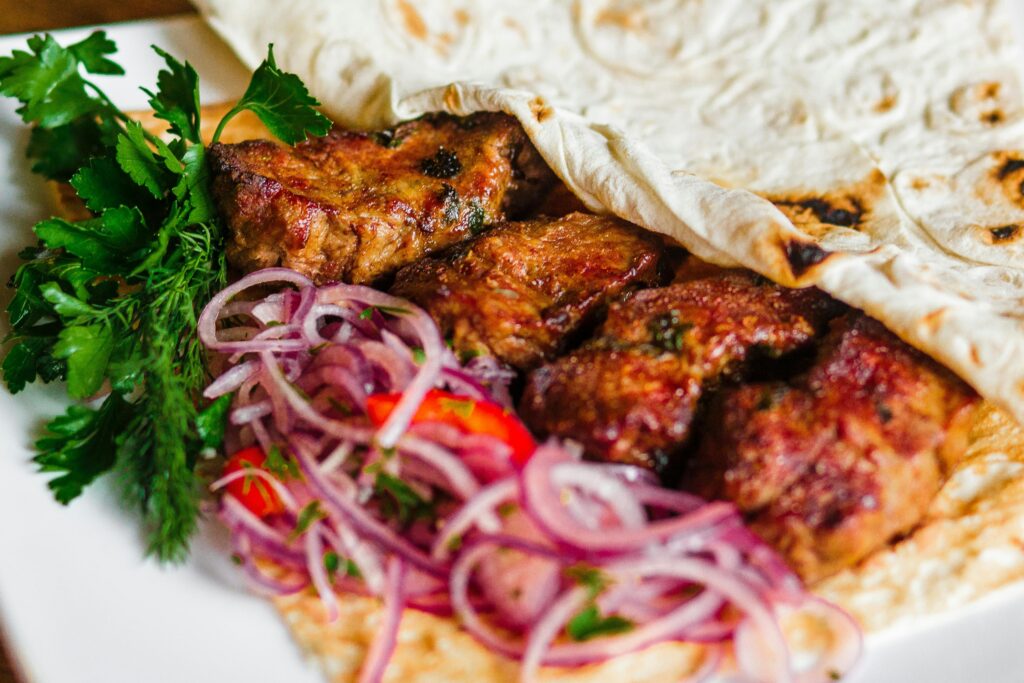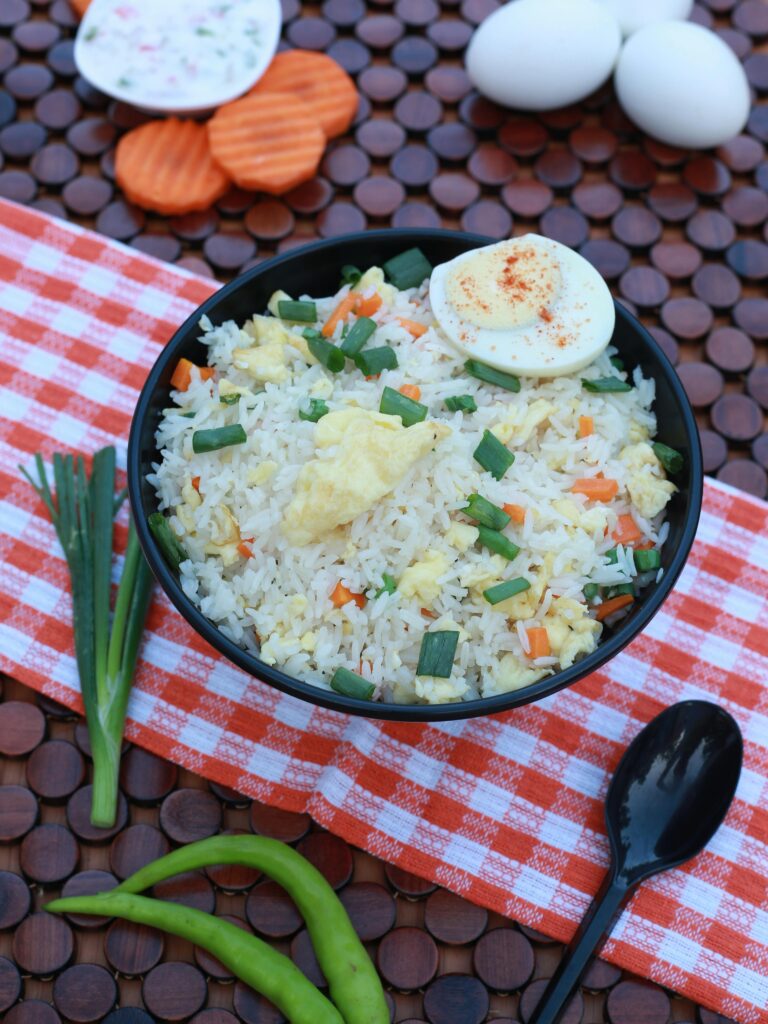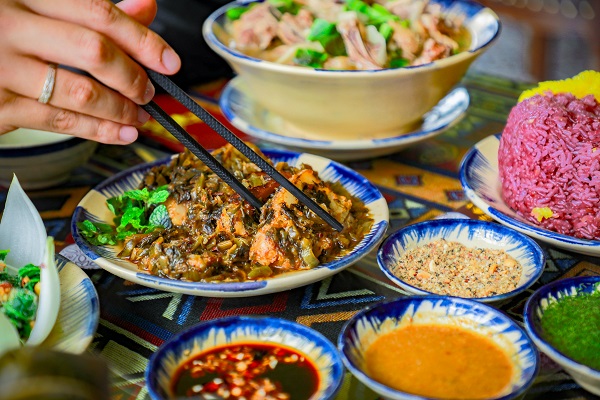When it comes to hosting a memorable dinner party, the food is undeniably the star of the show. Whether you’re celebrating a special occasion or simply enjoying an evening with friends and family, offering a unique and flavorful menu is a surefire way to elevate the experience. One of the best ways to make your dinner party truly stand out is by incorporating regional flavors from around the world. Not only does this introduce new tastes and ingredients to your guests, but it also creates a cultural experience that can turn an ordinary meal into an unforgettable feast.
In this article, we will explore some of the most exciting and diverse regional flavors from different corners of the globe. From the zesty and aromatic spices of the Middle East to the rich and hearty dishes of Eastern Europe, we’ll delve into how you can use these regional influences to perfect your next dinner party. So, whether you’re an experienced home cook or a beginner looking to impress your guests, this guide will help you bring the world to your dinner table.
Why Regional Flavors Are the Key to a Memorable Dinner Party
Before diving into the specifics of regional flavors, let’s take a moment to understand why they’re so effective at making a dinner party memorable. Here are some reasons why incorporating regional flavors into your menu is a great idea:
- Cultural Exploration: Regional flavors provide an opportunity for your guests to experience a taste of a different culture without leaving their seats. You can transport them to the Mediterranean, Asia, or Latin America with just a few key ingredients and cooking techniques.
- Aromatic Complexity: Many regional cuisines are known for their bold and complex flavor profiles. By incorporating these flavors, you can elevate the dishes you serve and make your dinner party feel like a gourmet experience.
- Unique Ingredients: Every region has its own set of signature ingredients that are often difficult to find in conventional recipes. Using these ingredients will make your dishes stand out and introduce guests to new flavors they may not have encountered before.
- Conversation Starters: When you serve food that’s new and exciting, it naturally sparks conversation. Guests will be curious about where the ingredients come from, how the dish is prepared, and the story behind it. This creates an interactive and engaging dining experience.
Regional Flavors from Around the World
Now, let’s take a closer look at some regional flavors from different parts of the world. We’ll explore specific ingredients and dishes that you can incorporate into your dinner party menu to impress your guests.
1. Middle Eastern Flavors: A Symphony of Spices
Middle Eastern cookery is known for its powerful flavors and rich, aromatic spices.Ingredients like cumin, coriander, cinnamon, and sumac are commonly used to create complex dishes that are both savory and sweet. Whether you’re making a vibrant mezze platter or a hearty lamb stew, Middle Eastern flavors will add depth to your dinner party menu.
Key Ingredients:
- Sumac: This tangy, lemony spice is used to add brightness to dishes like fattoush salad and grilled meats.
- Za’atar: A blend of thyme, sesame seeds, and sumac, za’atar is perfect for seasoning meats, vegetables, or flatbreads.
- Pomegranate Molasses: This syrupy, sweet-sour ingredient is great for adding a touch of acidity to sauces and dressings.
Dish Ideas:
- Hummus and Baba Ghanoush: Serve these classic Middle Eastern dips as appetizers. They pair well with warm pita bread and are delicious and creamy.
- Grilled Lamb with Za’atar: Marinate lamb chops in a mixture of olive oil, garlic, lemon juice, and za’atar for a savory dish that will wow your guests.
- Tabbouleh Salad: This fresh and vibrant salad made with bulgur, parsley, mint, and tomatoes offers a refreshing contrast to rich and savory dishes.
Here is a table summarizing Middle Eastern Flavors: A Symphony of Spices, showcasing key ingredients, their uses, and some examples of dishes that incorporate them.
| Spice/Ingredient | Description | Common Uses | Example Dishes |
| Cumin | Warm, earthy flavor with a slight citrus note. | Used in spice blends, marinades, and meat dishes. | Lamb kebabs, hummus, falafel. |
| Coriander | Slightly sweet, citrusy, and floral flavor. | Ground or whole seeds used in stews, soups, and salads. | Chicken tagine, muhammara, fattoush. |
| Sumac | striking crimson hue and a zesty, lemony flavor. | Adds acidity to salads, grilled meats, and dressings. | Fattoush, za’atar flatbreads, grilled vegetables. |
| Za’atar | A combination of thyme, sesame seeds, and sumac’s earthy, herbaceous tastes. | Used to season meats, vegetables, and breads. | Za’atar bread, roasted chicken, and vegetable dips. |
| Pomegranate Molasses | Sweet and sour syrup made from pomegranate juice. | Adds depth and tang to sauces, marinades, and dressings. | Fattoush salad, grilled lamb, chicken shawarma. |
| Cinnamon | Warm, sweet-spicy flavor commonly used in both sweet and savory dishes. | Used in spice blends, stews, and rice dishes. | Chicken with cinnamon rice, spiced lamb stew. |
| Allspice | Warm, aroma spice with nutmeg, cinnamon, and clove themes. | Adds complexity to meat dishes and stews. | Kofta, lamb kebabs, spiced rice pilaf. |
| Cardamom | Sweet, floral, and slightly citrusy flavor with a hint of spice. | Used in both sweet and savory dishes. | Arabic coffee, rice pudding, spiced lamb dishes. |
| Cloves | Strong, aromatic, and slightly bitter flavor. | Used sparingly in meat dishes, rice, and stews. | Lamb kebabs, rice pilaf, spiced tagines. |
| Turmeric | Earthy, bitter flavor with a bright yellow color. | Used in rice dishes, stews, and to color food. | Chicken tagine, rice pilaf, vegetable stews. |
| Rose Water | Fragrant floral water extracted from rose petals. | Used in desserts, beverages, and some savory dishes. | Baklava, rice pudding, Turkish delight. |
| Mint | Its flavor is fresh, refreshing, and aromatic, and it is often used in both savory and sweet types of food. | Used fresh or dried in salads, beverages, and sauces. | Tabbouleh, mint tea, yogurt sauces. |

2. Mediterranean Flavors: Fresh and Vibrant
Mediterranean cuisine is celebrated for its use of fresh, seasonal ingredients, light olive oil-based dressings, and an emphasis on vegetables, seafood, and grains. These flavors are perfect for creating a healthy and vibrant dinner party menu that feels both sophisticated and comforting.
Key Ingredients:
- Olive Oil: The backbone of Mediterranean cooking, olive oil adds richness to dishes and is used in everything from dressings to sautéing vegetables.
- Feta Cheese: This brined cheese adds a salty, tangy element to salads, pastas, and roasted vegetables.
- Fresh Herbs: Oregano, basil, and thyme are staples in Mediterranean cooking and add aromatic depth to dishes.
Dish Ideas:
- Greek Salad: A simple yet flavorful salad made with cucumbers, tomatoes, red onions, olives, and feta, dressed with olive oil and lemon juice.
- Seafood Paella: A Spanish classic, this dish features a combination of shrimp, clams, mussels, and fish, all cooked together with saffron rice for a delicious and colorful main course.
- Grilled Vegetables with Tzatziki: Marinated vegetables like eggplant, zucchini, and peppers can be grilled and served with a tangy yogurt-based tzatziki sauce for dipping.
| Ingredient | Description | Common Uses | Example Dishes |
| Olive Oil | Rich, smooth, and slightly fruity oil. | Used in dressings, sautés, and marinades. | Greek salad, grilled vegetables, tzatziki. |
| Feta Cheese | Salty, tangy, and crumbly cheese. | Used in salads, pastries, and as a topping. | Greek salad, spanakopita, roasted vegetables. |
| Lemon | Tart, citrusy fruit with a bright, refreshing flavor. | Used in dressings, marinades, and as a garnish. | Lemon chicken, tzatziki, hummus. |
| Garlic | Pungent and aromatic, adds depth to many dishes. | Used in sauces, dips, and roasted dishes. | Roasted garlic hummus, the bread with garlic, and pasta aglio e olio. |
| Oregano | Herby, slightly bitter with a warm flavor. | Used in marinades, sauces, and salads. | Greek salad, grilled lamb, pizza. |
| Basil | Sweet, peppery herb with a fragrant aroma. | Used fresh in sauces, salads, and as a garnish. | Caprese salad, pesto, pizza Margherita. |
| Tomatoes | Sweet and slightly tangy, used fresh or dried. | Used in salads, sauces, and Mediterranean stews. | Greek salad, tomato and cucumber salad, ratatouille. |

3. Latin American Flavors: Bold and Vibrant
With influences from European, African, and indigenous culinary traditions, Latin American food offers a diverse range of robust and savory dishes. The use of chili peppers, tropical fruits, and rich meats makes Latin American food a great option for a dinner party that’s both flavorful and exciting.
Key Ingredients:
- Chipotle Peppers: These smoked, dried jalapeños add a deep, smoky heat to sauces, salsas, and marinades.
- Cilantro: A fresh, herbaceous herb commonly used in Latin American salsas, guacamole, and ceviche.
- Mango: This tropical fruit gives savory and sweet recipes a juicy, sweet touch.
Dish Ideas:
- Ceviche: This refreshing seafood dish is made by marinating fresh fish or shrimp in lime juice, cilantro, and chilies. Serve with tortilla chips or as a starter.
- Tacos al Pastor: A traditional Mexican food that is ideal for a laid-back dinner gathering is marinated pig roasted on a vertical spit. Serve with fresh cilantro, onions, and a squeeze of lime.
- Mango Salsa: A vibrant salsa made with diced mango, red onion, cilantro, and lime juice is the perfect accompaniment to grilled meats or fish.
4. Indian Flavors: Spicy and Aromatic
Indian cuisine is known for its bold and aromatic spices, many of which are used in complex blends that create deeply layered dishes. Whether you’re serving vegetarian curries or marinated meats, Indian flavors can add richness and excitement to your dinner party menu.
Key Ingredients:
- Garam Masala: A blend of ground spices, including cinnamon, cumin, and cardamom, that forms the base of many Indian dishes.
- Curry Leaves: In South Indian cookery, these fragrant leaves are frequently used to give dals and curries a unique flavor.
- Tamarind: Prized for its sweet-sour flavor, tamarind is often found in curries, sauces, and chutneys.
Dish Ideas:
- Butter Chicken: This rich and creamy curry made with marinated chicken and a tomato-based sauce is a crowd-pleaser that pairs perfectly with naan and basmati rice.
- Samosas: These crispy pastry pockets filled with spiced potatoes and peas make for a delicious appetizer or snack.
- Masoor Dal: A comforting lentil stew made with onions, tomatoes, and a variety of spices. Serve with rice or flatbread.
| Ingredient | Description | Common Uses | Example Dishes |
| Chipotle Peppers | Smoky, spicy dried jalapeños with deep heat. | Used in sauces, marinades, and salsas. | Chipotle chicken, tacos al pastor, enchiladas. |
| Cilantro | Fresh, citrusy herb with a distinct flavor. | Used in salsas, salads, and as a garnish. | Salsa verde, guacamole, ceviche. |
| Mango | Sweet, tropical fruit with a juicy, fragrant flavor. | Used in salsas, salads, and desserts. | Mango salsa, ceviche, tropical fruit salad. |
| Jalapeño | Spicy, tangy chili pepper often used fresh or pickled. | Used in salsas, sauces, and to add heat to dishes. | Jalapeño poppers, spicy salsas, tacos. |
| Lime | Tart, refreshing citrus fruit that adds brightness. | Used in marinades, dressings, and to garnish. | Margarita, guacamole, lime chicken tacos. |
| Achiote | Earthy, slightly peppery spice often used in paste form. | Used in marinades, rice, and to color dishes. | Arroz con pollo, cochinita pibil, tamales. |
| Tamarind | Commonly used in pastes and sauces, this fruit has a sweet and tart taste. | Used in beverages, chutneys, and sauces. | Tamarind margarita, tamarind sauce, adobo. |

5. Asian Flavors: Bold, Savory, and Sweet
Asian cuisine encompasses a wide variety of regional flavors, from the umami-rich dishes of Japan to the spicy and aromatic curries of Thailand. The key to Asian cooking lies in balancing salty, sweet, sour, and bitter flavors in every dish.
Key Ingredients:
- Soy Sauce: A fermented sauce made from soybeans, used to add saltiness and depth of flavor to marinades and stir-fries.
- Coconut Milk: A creamy liquid made from coconut meat, used to add richness to curries and soups.
- Lemongrass: A fragrant herb used to impart a citrusy note to soups, curries, and stir-fries.
Dish Ideas:
- Thai Green Curry: A fragrant curry made with coconut milk, green curry paste, and a variety of vegetables and protein options like chicken or tofu.
- Sushi Rolls: A fun and interactive way to serve Japanese cuisine at your dinner party. Allow visitors to put together their own rolls with fish, avocado, and cucumber as fillings.
- Korean BBQ: Set up a grill at the table and let your guests cook their own meat, vegetables, and seafood, served with a variety of dipping sauces and banchan (side dishes).
| Ingredient | Description | Common Uses | Example Dishes |
| Soy Sauce | Salty, umami-rich liquid made from fermented soybeans. | Used in marinades, stir-fries, and dipping sauces. | Sushi, stir-fried noodles, teriyaki chicken. |
| Coconut Milk | Creamy liquid made from the flesh of coconuts. | Used in curries, soups, and desserts. | Thai green curry, coconut soup, coconut rice. |
| Lemongrass | Aromatic, citrusy herb with a fresh fragrance. | Used in broths, curries, and marinades. | Tom Yum soup, Vietnamese pho, curries. |
| Ginger | The flavor of this root is powerful spicy, and slightly sweet. | Used fresh or ground in soups, stir-fries, and teas. | Ginger chicken, stir-fried vegetables, ginger tea. |
| Fish Sauce | Salty, umami-rich sauce made from fermented fish. | Used in dressings, soups, and marinades. | Vietnamese pho, Thai dipping sauces, pad Thai. |
| Rice Vinegar | Tangy, mild vinegar made from fermented rice. | Used in sushi rice, dressings, and sauces. | Sushi rolls, vinaigrettes, sweet and sour sauces. |
| Five-Spice Powder | A blend of star anise, cloves, Chinese cinnamon, Sichuan peppercorns, and fennel. | Used in marinades, braises, and stir-fries. | Chinese BBQ pork, braised duck, stir-fried tofu. |
| Chili Paste | Spicy, savory paste made from ground chilies and spices. | Used in stir-fries, curries, and dipping sauces. | Korean kimchi, Thai curry, Sichuan mapo tofu. |

How to Incorporate Regional Flavors into Your Dinner Party Menu
Now that you have an idea of the regional flavors you can incorporate into your dinner party, here are some tips on how to do so effectively:
- Mix and Match: You don’t have to stick to one region. Combine flavors from different areas for a more diverse and interesting menu. For example, serve a Mediterranean appetizer, followed by a Latin American main course, and finish with a Middle Eastern dessert.
- Focus on Fresh Ingredients: Regional cuisines are often based on fresh, seasonal ingredients. Try to source the best quality produce and proteins to bring out the authentic flavors of the dishes you’re making.
- Get Creative with Presentation: Regional dishes often have unique and beautiful presentations. Consider serving food in traditional bowls, platters, or with garnish to create an immersive dining experience.
- Consider Dietary Restrictions: Many regional cuisines offer a variety of options for different dietary preferences. Whether your guests are vegetarian, gluten-free, or dairy-free, there’s likely a regional dish that will accommodate their needs.
Some different regional flavors:
Regional Flavors Funchal
Funchal’s distinctive characteristics are a reflection of Madeira’s rich history and culture. Locally sourced ingredients bring out the authentic taste of the island. Seafood, fruits, and vegetables dominate the culinary scene here. Visitors flock to try traditional dishes that capture the essence of Madeira. Regional flavors Funchal offer a taste of authenticity, offering much more than just food. From savory espetada to the sweet bolo de caco, the flavors are unforgettable. Each dish tells the story of the land and its people, making the island a must-visit for food enthusiasts.
Soul & flavors distribuição de produtos regionais lda
Numerous regional products are available from Soul & Flavors Distribuição de Produtos Regionais Lda. Their mission is to bring authentic flavors from various regions to consumers. With a focus on quality, the company ensures that every product showcases true local taste. They cater to customers who want to experience regional flavors from around the world. Soul & Flavors provides the best of traditional, regional ingredients to elevate any culinary experience. Their collection spans across diverse regions, bringing unique tastes to your kitchen.
513639934 Distribution of Regional Products by Soul & Flavors Lda
Soul & Flavors Distribuição de Produtos Regionais Lda, registered under 513639934, is a well-established company. They focus on the distribution of regional products worldwide. Their catalog includes a variety of authentic flavors, offering something for every palate. By ensuring the quality and originality of each product, the company has gained a strong reputation. Soul & Flavors aims to bring the best regional ingredients to homes and restaurants. Their wide selection of local flavors makes them a trusted choice for culinary professionals.
Regional kit kat flavors italy
Kit Kat has launched various regional flavors to cater to different tastes. These unique flavors reflect the local preferences of the regions where they are sold. From green tea in Japan to sweet potato in the US, each region enjoys a twist on the classic treat. These regional Kit Kat flavors offer a fun and exciting way to explore diverse tastes. They allow consumers to experience the fusion of chocolate with local ingredients. The global appeal of Kit Kat’s regional flavors continues to grow as people discover new tastes.
Scotch Flavors by Region
The flavors of Scotch whiskey differ greatly by Scottish location. Each area has its unique characteristics, influencing the whiskey’s flavor profile. For example, the Islay region is known for its smoky, peaty whiskeys. In contrast, there are sweeter, fruitier alternatives in the Speyside region. Understanding scotch flavors by region helps whiskey enthusiasts find their preferred taste. The distinct terroir of each region creates a diverse range of flavors in every bottle. Whether you prefer a smooth or robust taste, there’s a Scotch whiskey for every palate.
Coffee Regional Flavor Profiles
Coffee regional flavor profiles are influenced by the climate, altitude, and soil. Beans from various coffee-growing regions have unique flavors. Ethiopian beans, for instance, frequently have floral, fruity flavors. Conversely, Colombian beans often have a well-rounded, nutty flavor. Understanding coffee regional flavor profiles helps coffee drinkers select beans that match their preferences. Whether you prefer a rich, bold brew or a lighter, brighter cup, regional flavors offer endless options. Each coffee-growing area contributes its own unique character to the beans.
Coffee Regions and Flavors
Coffee regions and flavors are linked to the environmental conditions in which the beans are grown. Factors such as altitude, rainfall, and temperature impact the final flavor. The coffee beans from Brazil are often nutty and chocolatey, while beans from Kenya are known for their bright, citrusy taste. Coffee regions and flavors vary widely, offering something for every taste preference. By exploring different regions, coffee drinkers can discover a vast array of flavor profiles. Each region brings a unique aspect to the coffee experience.

Lays Regional Flavors
Lays regional flavors take inspiration from diverse cultures worldwide. The snack company uses local ingredients to create unique, regional chips. From the tangy taste of Indian curry to the smoky BBQ of the American South, Lays offers exciting flavor options. These regional flavors allow consumers to enjoy tastes that reflect their heritage or experience new ones. Lays regional flavors continue to innovate, making each chip a journey through diverse culinary traditions. Their broad range of chips showcases how food can unite different regions with bold flavors.
Scotch Whiskey Regions Flavors
Scotch whiskey regions offer a variety of flavor profiles based on their unique climates and distilling methods. Each region in Scotland contributes distinct characteristics to the whiskey. For instance, the Highland region’s whiskeys are often rich and full-bodied, while those from Islay are known for their peaty smokiness. Understanding scotch whiskey regions flavors can enhance the enjoyment of this iconic spirit. Whether you enjoy light, floral notes or deep, smoky tastes, scotch whiskeys from different regions offer a wide range of options.
Coffee Bean Flavors by Region
Coffee bean flavors by region are shaped by the local growing conditions. Beans from Central America, for example, are known for their bright acidity and fruity notes. African beans, on the other hand, frequently smell faintly of flowers or berries. Coffee bean flavors by region are crucial for those looking to explore different tastes. Regional differences make each coffee-growing area special and offer something new to coffee lovers. Understanding these regional flavors can help you find your perfect cup of coffee.
Italian Regional Flavors Inc
Italian Regional Flavors Inc offers a wide selection of traditional Italian ingredients. From the rich cheeses of Tuscany to the bold olive oils of Sicily, this company brings Italy’s best regional flavors to the world. Italian cuisine varies from region to region, and this company ensures that every flavor is authentically represented. Whether you’re looking for pasta, sauces, or herbs, Italian Regional Flavors Inc provides high-quality, regional products. Their focus on authentic ingredients makes them a trusted name in Italian culinary offerings.
Merger will effect regional flavor
A merger will effect regional flavor offerings by combining the strengths of both companies. This may lead to new regional products that offer a wider variety of flavors. With expanded resources, the merged company could offer a broader range of regional flavors from different areas. The merger could also help the company reach new markets, making regional flavors more accessible to consumers worldwide. Understanding the impact of mergers on regional flavor distribution will help businesses adapt to changing market demands and consumer preferences.
Coffee Region Flavor Profiles
Coffee region flavor profiles are determined by the unique growing conditions of each area. High altitudes and specific climates lead to distinct tastes in the beans. Beans from Costa Rica are known for their bright acidity, while beans from Indonesia often have earthy, rich flavors. Exploring coffee region flavor profiles helps consumers understand the diversity of tastes available. Each coffee-growing region offers a different experience, allowing you to find the perfect cup. Understanding these profiles enhances the appreciation of coffee’s global flavors.
Scotch Regions Flavors
Scotch regions flavors differ significantly, creating a wide range of whiskey styles. Every location has its own distinct personality, ranging from the mild, flowery aromas of the Lowlands to the peaty and smoky notes of Islay. The flavors of the Scotch regions emphasize the impact of the local climate and distillation techniques. Understanding different geographical variations helps one appreciate this historic character. Whether you prefer a bold, smoky whiskey or something lighter, there is a scotch to match every preference. The world of Scotch whiskey is vast, with contributions from every location.
Scotch Regions and Flavors
Scotch regions and flavors are closely linked, with each area imparting unique characteristics to the whiskey. The Highlands produce rich and full-bodied whiskeys, while Islay is known for its distinctive smoky and peaty notes. Lowland whiskeys are often lighter and more delicate in flavor. Scotch regions and flavors offer a variety of choices, allowing whiskey lovers to explore different profiles. By understanding the distinct flavors of each region, you can find a Scotch whiskey that suits your taste perfectly.
Coffee Bean Flavor Profiles by Region
coffee flavor profiles by region offer a unique taste experience based on where the beans are grown. The unique qualities of each region’s beans are influenced by the soil and environment.. For example, beans from Central America tend to have bright acidity and fruity notes, while beans from South America may have nuttier, chocolatey profiles. Understanding coffee bean flavor profiles by region helps coffee enthusiasts select beans that match their personal preferences. Whether you prefer a light, fruity cup or a rich, full-bodied brew, the origin of the beans plays a key role in flavor development.
Scotch Regions Flavor Profiles
Scotch regions flavor profiles offer an in-depth exploration of the nuances found in Scottish whiskey. The flavor profiles of whiskeys from Islay are typically smoky and peaty, while those from the Highlands may be rich and full-bodied, with hints of heather and honey. The whiskeys from the Lowlands are more delicate and lighter, and they frequently have green and flowery Regional Flavors. Speyside, one of the most famous regions, offers whiskeys that are sweet, fruity, and often associated with apple and vanilla notes. Understanding Scotch Regional Flavors profiles can help enthusiasts discover the best whiskey for their taste.
Coffee Flavor Notes by Region
Coffee flavors by region vary greatly due to differences in climate, soil, and altitude. For example, beans from Kenya are known for their vibrant acidity and berry-like notes, while beans from Colombia often have a smoother, nutty profile. Ethiopian beans are famous for their floral and fruity characteristics, while beans from Indonesia tend to have earthy, spicy Regional Flavors . By understanding coffee flavor notes by region, coffee drinkers can discover new and exciting Regional Flavors based on their preferences. Each region’s unique conditions create a distinctive coffee experience for every cup.
Coffee From Which Growing Region Has Herbal Earthy Flavors
Coffee from specific growing regions is known for its herbal, earthy flavors. Beans from places like Sumatra and portions of Indonesia have earthy, herbal, and deep flavors. These areas’ particular soil and climate contribute to the coffee’s unique Regional Flavors profile. Coffee from these regions is often preferred by those who enjoy a more grounded, earthy taste. The earthy tones in these coffees can also be complemented by subtle herbal nuances. Understanding which growing regions produce these flavors helps coffee enthusiasts choose the beans that align with their taste preferences.
BBQ Flavors by Region

BBQ flavors by region vary widely across the world, each area bringing its own unique twist to the classic barbecue. In the southern United States, BBQ is often tangy and sweet, with vinegar-based sauces popular in places like the Carolinas. Kansas City BBQ is known for its rich, smoky, and sweet tomato-based sauce. Meanwhile, Texas BBQ focuses on bold, smoky flavors, often featuring beef brisket. BBQ flavors by region showcase the cultural influences that shape each area’s cooking style, giving BBQ lovers an opportunity to explore a variety of flavors from different parts of the world.
Conclusion
Regional flavors are a fantastic way to add excitement and authenticity to your dinner party menu. By exploring the spices, herbs, and cooking techniques of different cultures, you can create a memorable dining experience that will leave your guests talking long after the evening ends. There are many culinary gems in the world just waiting to be found, ranging from the fresh, vivid flavors of the Mediterranean to the rich and fragrant spices of India.
By incorporating these regional flavors into your next dinner party, you’ll not only impress your guests with your culinary skills but also give them an unforgettable cultural experience. So, why not step out of your culinary comfort zone and explore the world of regional flavors? Your guests will thank you for it!
FAQs:
1. What are some regional flavors from Italy that can elevate a dinner party?
Answer: Italian regional flavors include fresh basil and tomatoes from the South, truffles and rich cheeses from Piedmont, and hearty meats like osso buco from Lombardy. Dishes like pasta with pesto or risotto with truffle oil will bring authentic Italian flair to your dinner..
2. How can I incorporate French regional flavors into my dinner party?
Answer: French cuisine offers Regional Flavors from diverse regions: Provence’s herbes de Provence, Normandy’s apples and cream, and Bordeaux’s fine wines. Serve dishes like Coq au Vin from Burgundy or Bouillabaisse from the south for a delicious French experience.
3. What are some classic Regional Flavors dishes from Spain to include at a dinner party?
Answer: Spanish cuisine boasts rich regional flavors, like seafood paella from Valencia, the famous tapas from Andalusia, and the robust flavors of Basque cuisine. Offering dishes like Gambas al Ajillo or Patatas Bravas will bring Spanish vibrancy to your party.
4. How can I incorporate Southern flavors from the U.S. into my dinner party?
Answer: Southern cuisine is known for its bold flavors, including BBQ, fried chicken, and shrimp and grits. For a memorable dinner, serve dishes like jambalaya, cornbread, and pecan pie for dessert to capture the essence of Southern comfort.
5. How can I add flavors from the Middle East to my dinner party?
Answer: Middle Eastern cuisine is rich with spices like cumin, coriander, and sumac. Serve dishes like lamb kebabs, falafel, and hummus with pita bread to highlight the diverse and aromatic flavors of the region.
6. What are some regional Asian flavors that will stand out at a dinner party?
Answer: Asian cuisine spans many regions, each with unique Regional Flavors. From the tangy tamarind of Thailand to the savory soy sauces of China, serve dishes like Pad Thai, sushi rolls, or Mongolian beef to showcase the range of Asian flavors.
7. How can I incorporate regional flavors from India into my dinner party?
Answer: Indian cuisine is known for its complex spice blends, including garam masala, turmeric, and cumin. Dishes like butter chicken, biryani, and dal will bring vibrant Regional Flavors to your table, along with naan and raita for balance.
8. What regional flavors from Mexico should I include in my dinner party?
Answer: Mexican cuisine is known for bold Regional Flavors like smoky chipotle, tangy lime, and creamy avocado. Include dishes like tacos with mole sauce, tamales, and churros for dessert to create a flavorful and festive Mexican spread.






